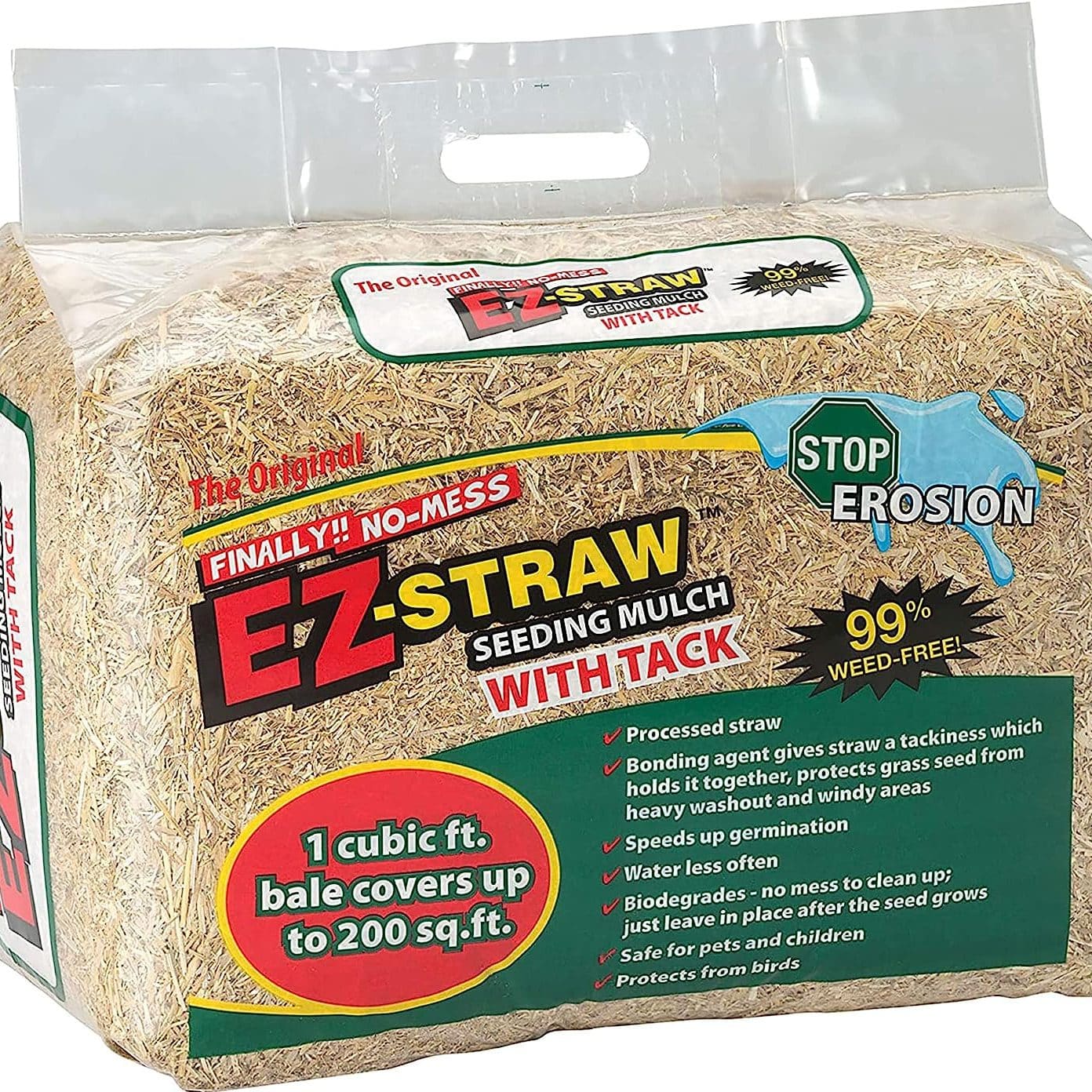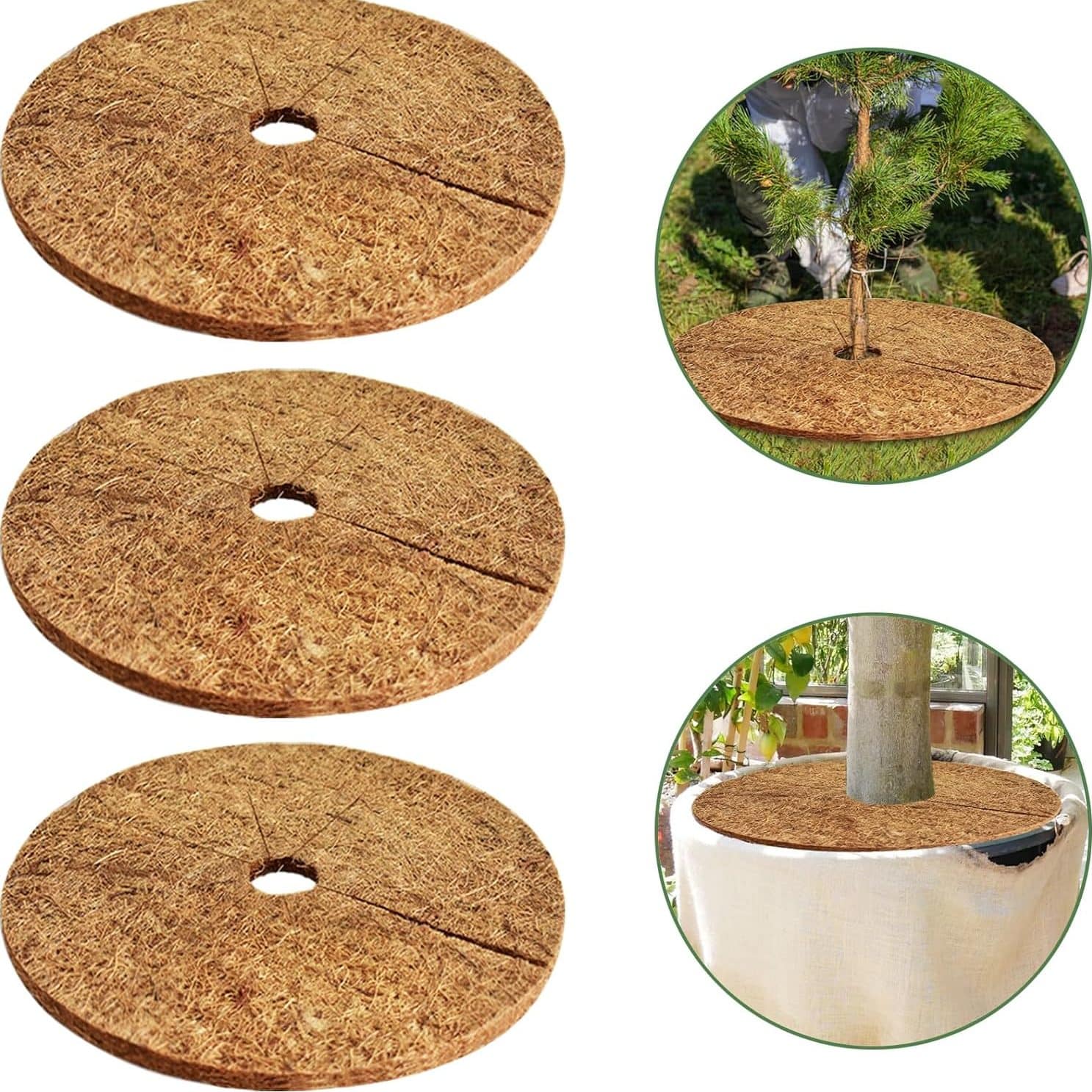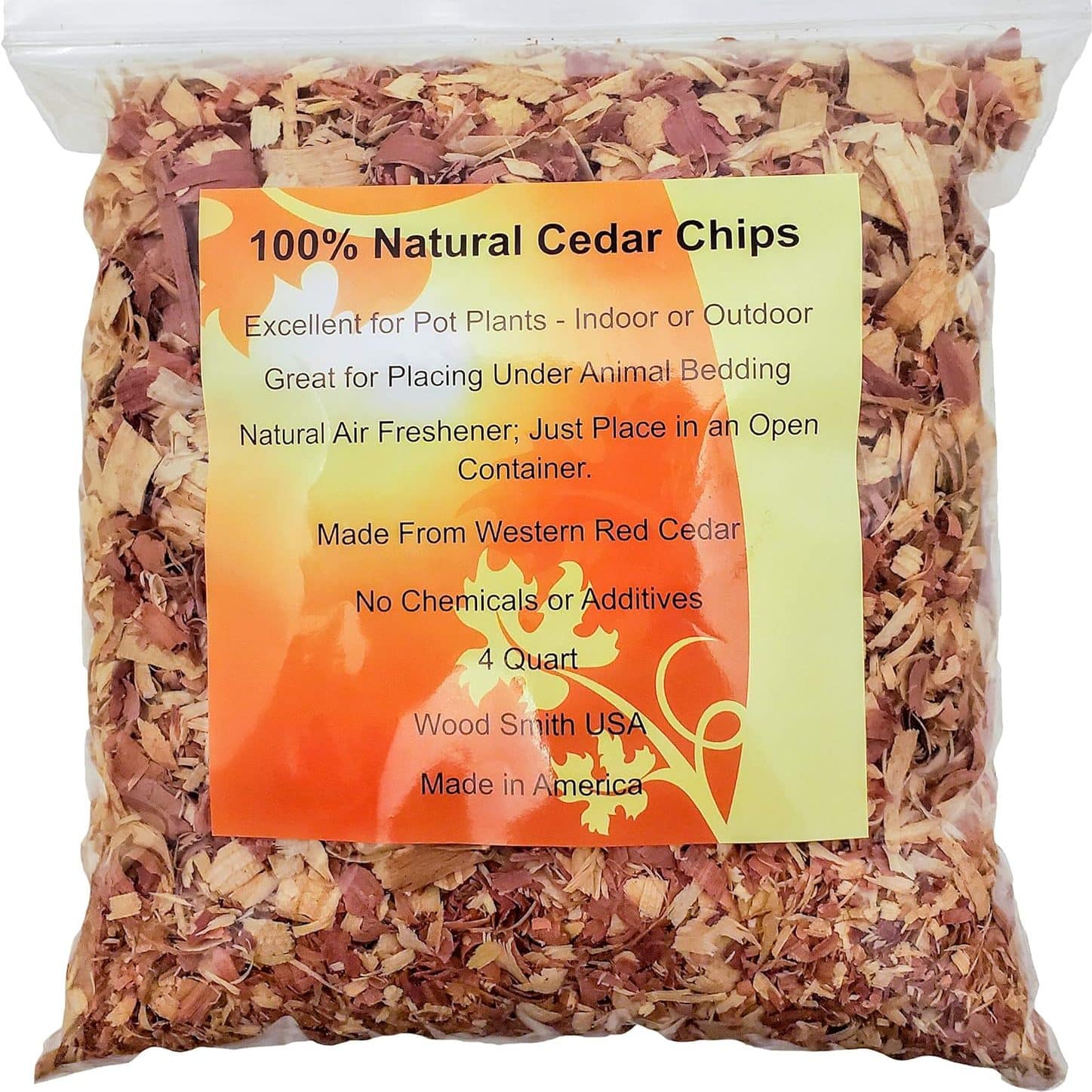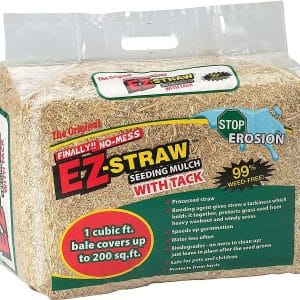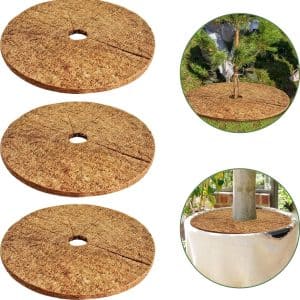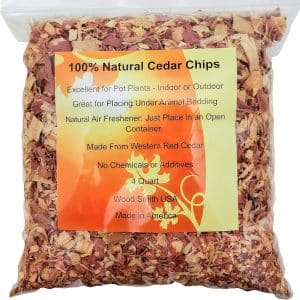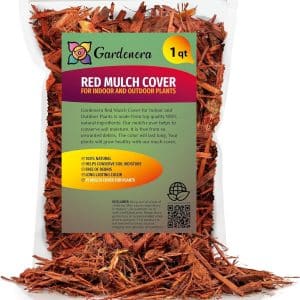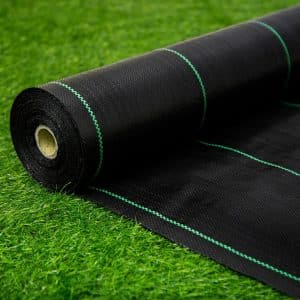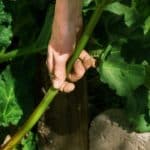Table of Contents
It is not rocket science; you don’t need a degree to figure out the secret to lush. The secret to healthy vegetable garden beds lies in the mulch. We’re not just talking about any mulch; we’re talking about the crème de la crème of vegetable garden mulches. So, buckle up, green thumb, because we’re going to unearth the five best vegetable garden mulches.
Whether you’re trying to suppress naughty weeds, maintain that moisture your tomato plants love, or just jazz up the look of your garden, we’ve got something for everyone. And let’s not forget the unspoken hero of mulching: it adds those all-important nutrients back into the soil, giving your harvest a real kick!
Defining Mulch: A Simple Introduction
Using mulch is like putting a reassuring hug around your plants. The main idea? Protect the soil from weather and other environmental beatings. Think of it as the heavy coat you don in winter. Now, there are two types of mulch, organic and inorganic. Don’t let those fancy names scare you!
Organic mulches like wood mulches, pine needles, or straw – they’re natural and break down over time, adding nutrients to the soil. But watch out, those wood pieces can sometimes gobble up nitrogen in the soil, and your veggies won’t be too happy about that! On the other hand, inorganic mulches, like plastic mulches or weed barrier cloth, can suppress weeds just fine but don’t add anything to the soil. Also, these fellas can break down over time and become a real eyesore in your garden.
Top 5 Best Mulch for Vegetable Gardens
1. EZ-Straw Mulch with Tack
First on the list is this bad boy, the EZ-Straw Seeding Mulch with Tack. It’s like the Rolls Royce of vegetable garden mulches. Why is it so swell, you ask? It not only helps in growing your seeds but sifts into your garden soil, improving it year after year. So, your soil stays moist, your veggies are happy, and your water bill doesn’t skyrocket from constant watering.
Pros
- It’s got superior moisture retention
- It’s easy to install
- This mulch ring offers good weed control
- It’s long-lasting
Cons
- May get messy when wet
- It doesn’t have the most natural-looking design.
2. ZeeDix Mulch Ring Tree Protector Mat
The ZeeDix Mulch Ring Tree Protector Mat isn’t your run-of-the-mill type of mulch. It’s made of high-quality, durable material designed to withstand hot and dry conditions. Perfect for places where the sun can be a real scorcher. Now, while it might not have that natural mulch look, it does do a splendid job of keeping those pesky weeds at bay, while ensuring your precious veggies get all the moisture they need. And trust me, nothing quenches a parched garden like this mat. Yes, it comes with a price tag that can make you wince, but if you’re looking for efficiency and durability, it’s worth considering. Plus, installation is as easy as pie. No need for fancy tools or extended bouts of sweat and toil.
Pros
- It retains moisture like a champ
- Easy to set up
- Smother weeds like no one’s business
- You won’t need to replace it every time the seasons change
Cons
- Its price tag can be a bit of a hang-up
3. Wood Smith USA 100% Natural Cedar Shavings Mulch
Imagine a mulch that not only cares for your vegetable garden but also brings a beautiful cedar aroma. Well, we ain’t gotta imagine anymore! The Wood Smith USA 100% Natural Cedar Shavings Mulch is what you’re looking for. This wood chip mulch is a hundred percent natural. As it decomposes, it feeds the soil with organic matter. These are natural cedar shavings, as natural as rain falling from the sky. They’re like arborist wood chips but cedar-scented.
Pros
- This mulch is chunky, helping to maintain proper moisture levels.
- The lovely cedar scent is a bonus and helps keep pests at bay
- Suppresses weed growth
- It’s natural and organic
Cons
- Not everyone likes the cedar scent
- It might not be the flashiest-looking mulch around
4. Gardenera Premium Red Mulch Cover
Ever heard of the Gardenera Premium Red Mulch Cover? This mulch isn’t just good-looking with its red color, it’s also downright functional. It’s long-lasting, great at suppressing those pesky weeds, and when it breaks down, it’s like a gourmet meal for your plants. If your backyard is a hot, dry place, this mulch is your new best friend. Like a good cowboy hat, it’ll keep your soil from getting too hot.
Pros
- Perfect for hot summer months.
- It lasts long
- Its red color adds a splash of vibrancy to your garden
Cons
- Their decomposition process is slow, which may not be ideal for gardeners who want a quick fix to their soil condition.
- The bulk of these chips may hinder your prep work for the next gardening season. Too many chips can complicate things when you try to turn your soil over.
5. EXTRAEASY Garden Weed Barrier Landscape Fabric
No doubt, this EXTRAEASY Garden Weed Barrier Landscape Fabric is a rockstar in the world of landscape fabrics. It’s a dream come true for vegetable gardeners because this inorganic mulch is phenomenal at suppressing weeds. With this bad boy, say goodbye to back-breaking weeding sessions. But you know what’s even better? It’s terrific at holding moisture in the soil. Your plants are going to love you for it, ’cause it’s downright critical for their growth. This is no ordinary landscape fabric—It’s chemical-free, which isn’t common for inorganics.
Pros
- Suppresses weeds and weed growth
- Promotes moisture retention
- Chemical-free product, making it eco-friendly.
- Cost-effective option
- Doesn’t affect soil fertility
- Increases your garden’s aesthetics
Cons
- Can be difficult to cut and lay for some
- Lacks the natural look and smell that organic mulches provide.
Buying Guide
Organic vs Inorganic Vegetable Garden Mulch Options
When it comes to mulch, there’s a big difference between organic and inorganic. Organic mulch comes from natural plant materials like tree bark, leaves, grass clippings, and compost. It’s the real McCoy and it breaks down over time, releasing nutrients into the soil. Think of it as the slow-cooked barbecue of mulch. On the flip side, you get inorganic mulch, which is made from man-made materials like plastic or rubber. This is your fast food option. It does a great job of keeping weeds away, but won’t provide your soil with the same hearty nutrients. So when you’re choosing your mulch, consider if you’re going for the nutritious home-cooked option or the quick and easy one.
Availability and Cost
Now, I’m no finance genius, but I do know this: cost and availability matter. Organic mulch is widely available and usually cheaper because it’s made from stuff that’s generally easy to get, like wood chips or compost. You can even make your own from yard waste if your pockets aren’t too deep. Now, inorganic mulch like rubber or plastic can be more expensive and harder to find. So, when choosing a mulch, think about what you can afford and what’s available around your locale. A dollar saved is a tomato earned, I always say.
Mulch Depth
This refers to the thickness of your mulch layer. You see, it’s like a good pizza crust – not too thin, not too thick. Just right. Most folks agree that a layer of mulch around 2-4 inches deep is what you want. Too little, and you won’t get the moisture retention and weed suppression you need. Too much, well, you might suffocate your plants. So whether you’re using pine needles or cedar shavings, remember – depth matters.
Weed Suppression
Weeds are a gardener’s worst enemy. They crop up everywhere, steal your vegetables’ nutrients, and just won’t quit! A good layer of mulch around your plants is like a bouncer at a club, it keeps unwanted visitors away. It does this by blocking sunlight, killing off the pesky weeds before they even get started. For all you city slickers out there, consider landscape fabric. It’s fantastic at suppressing weeds and holding moisture in the soil, and it’s even rich in nutrients. Plus, it lasts longer than organic mulch, so you won’t need to replace it as often.
Water Permeability and Temperature Regulation
In layman’s terms, that’s how well your mulch lets water through and keeps the soil at a steady temperature. You see, vegetables are kind of like Goldilocks, they want conditions that are just right. Too dry, too wet, too hot, or too cold can leave your veggies in a pickle. That’s why the right mulch is important. It can regulate the soil temperature, retain moisture, and let excess water seep through, creating perfect conditions for your vegetable plants to thrive.
Aesthetic Appeal and Decomposition Rate
When you’re choosing the best mulch for your vegetable garden, you need to consider two things. First, how it looks, because we all want our garden to be easy on the eyes. Second, how fast it breaks down. You don’t want to spend your precious time replacing mulch that disappears quicker than a popsicle on a hot day. Organic mulches like leaf mulch or compost can be an eye candy for your garden as they mesh well with the green surrounding and also serve the double purpose of amending your soil as they decompose over time. But remember, these guys disappear a lot faster than inorganic mulches like mini pebbles or rubber mulch. So, choose wisely!
How to Properly Apply Mulch in Your Vegetable Garden and Tips
Applying mulch is simple but you don’t want to wing it either. So here are the steps for mulching a vegetable garden. First thing, clean up. We’re speaking about weed seeds, dead vegetation, and anything that’s not helping your plants thrive. Next, lay a thick layer of mulch about 2-3 inches deep. Thin layers, and you’ll be seeing more weed sprouts than you’d care for. Too thick, and you’ll be denying plant roots the water it needs. Try and keep that layer of mulch about an inch away from the stems of your plants to avoid ’em getting rotten or stunted.
Don’t forget, a natural organic mulch will break down faster, so you might have to reapply during the growing season. Now to give you a little extra help, here are some quick tips:
- Consider the size of your garden while choosing the mulch.
- For preventing weed seeds from sprouting, opt for a finely shredded organic mulch.
- If you’ve got slugs or snails to deal with, avoid mulch that creates a good hiding place for them, like straw mulch.
- Remember that some mulches like cocoa hulls or straws can alter the pH of your soil. Test your soil before and after applying mulch.
- Consider the visual impact. Colorful inorganic mulches like mini pebbles or rubber can add a dramatic effect, especially for small gardens or planters.
- For areas with high wind, heavier mulches like wood chips or bark are better at staying put.
- Finally, don’t forget to water. Mulches do help with moisture retention, but they are not a substitute for watering!
Frequently Asked Questions
1. Is organic or inorganic mulch better for vegetable gardens?
Whether organic or inorganic mulch is better for your vegetable garden, well, it’s kind of like asking if chocolate or vanilla is better. It depends on what you need/prefer. Organic mulches like straw, wood chips, or dry leaves break down with time, improving the soil texture, keeping your vegetable plants happy, and making your life a little easier. Now, if you’re more into keeping weeds at bay or if you have a permanent area like a path, then inorganic mulches. It’s your garden, and you make the rules! Remember, the benefits of mulch extend beyond just aesthetics, so don’t overlook their importance.
2. How often should I replenish or replace mulch in my vegetable garden?
Make no mistake, mulch isn’t a ‘set it and forget it’ deal. You’ll have to replace or replenish that mulch from time to time. But how often, you wonder? Well, there isn’t a one-answer-fits-all situation. Generally, if you’re using organic mulches, you’ll need to top it up every year. Inorganic mulch, on the other hand, will last for a few years before needing replacement. But remember, every garden bed is unique, so simply keep an eye on your patch and adjust as necessary.
3. How often should I replenish or replace mulch in my vegetable garden?
Now, this may surprise you, but not all veggies are fans of mulch. Certain heavy-feeding vegetables need a whole heap of nitrogen in their soil to grow right, and wood mulches, though popular, are not the best for this. Why? Well, as the wood pieces break down, they temporarily bind up the nitrogen in the soil. And as a result, plants that need nitrogen to be readily available may struggle under wood mulches. And let’s not even get started on plastic mulches. Though pretty effective, these fellas, like the weed barrier cloth or landscape fabric, can break down and mess up in vegetable beds when exposed to the elements. So, if you’re unsure, go with natural mulches.
4. Can I use recycled materials as mulch in my vegetable garden?
Now here’s a thought. Can you use recycled materials as mulch in your vegetable garden? Well, I’m all for going green and saving the greenbacks, so here’s the scoop. Yes, siree! You absolutely can. You get an aesthetically pleasing, weed-controlling, moisture-conserving layer on your soil surface, and the planet gets a little less trash. You’d be surprised at the stuff you can use. Shredded newspaper, cardboard, compost from your vegetable scraps, and even old wool rugs can serve as excellent vegetable garden mulches. Just remember, the key is ensuring the materials are safe for your plants, and won’t mess up your soil structure by smothering it or blocking air and water.
Final Thoughts
You know, truth be told, when it comes to vegetable gardening, it’s all about that mulch! Tomatoes, peas, you name it – they all love a good snuggle under some top-notch mulch. Whether you layer them on thin or thick, they catch that rain just right, keep the earth cool in the summer garden, and choke out those pesky weeds. You can always find a host of options online. If you want to mix things up, try inorganic stuff like old rugs, newspapers, etc. Mind you, this is not for everyone, but it sure works. The point is, you’ve got options, so don’t be afraid to mix, match, and experiment. What’s vegetable gardening if not a little adventure?

I’m John, a “seasoned citizen” and an avid gardener. I live in Minnesota, where our weather and growing conditions can be harsh and challenging. Over the years, I have learned a thing or two about being successful in growing things. I have curated these tips, which I think are helpful for the beginning gardener and the seasoned experts. If you have feedback, let me know in the contact form.

